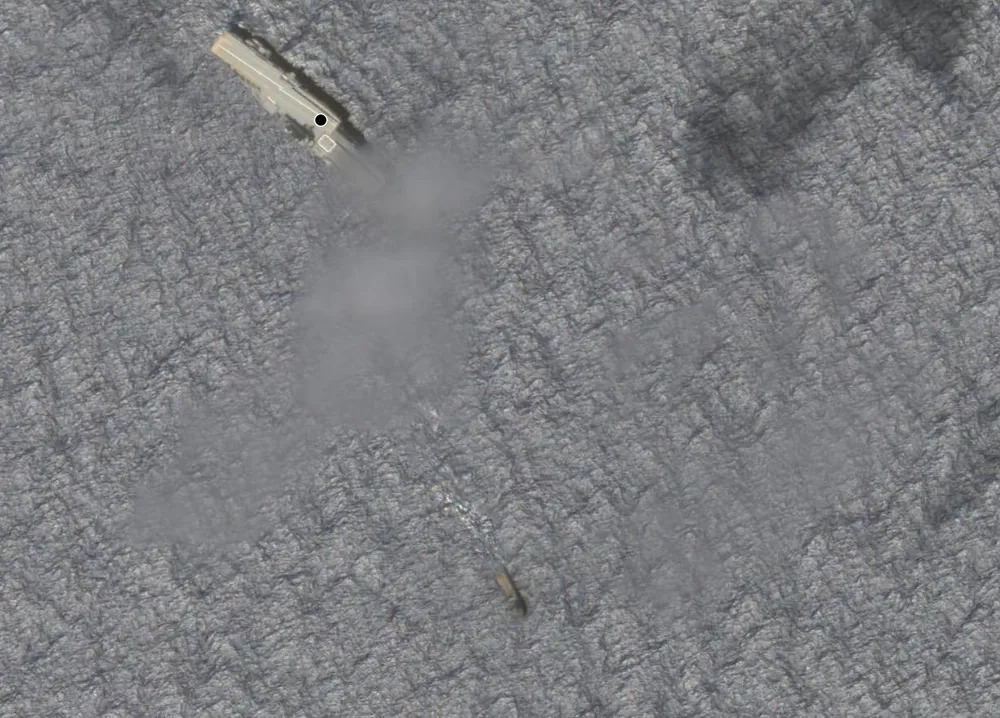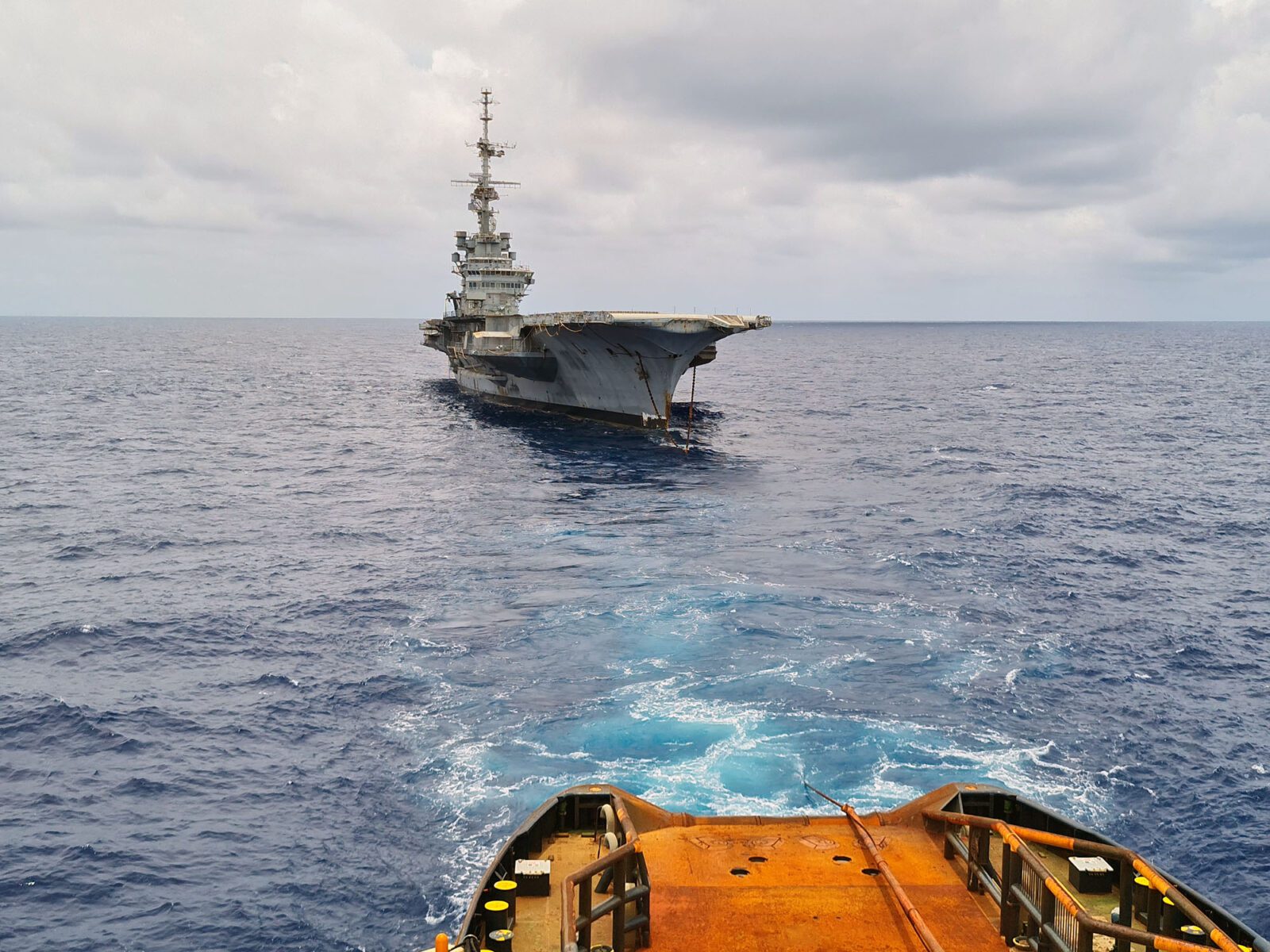In a note, the naval force said that the procedure was done safely and with technical competence, in the late afternoon of Friday (3).
The Brazilian Navy sank late Friday afternoon (3) the decommissioned aircraft carrier São Paulo, which had been sailing for months at sea after being banned from Brazil and abroad.
“The procedure was conducted with the necessary technical competence and safety by the Brazilian Navy, in order to avoid logistical, operational, environmental, and economic damage to the Brazilian State,” says the naval force, in a note (at the end of the news).
On Friday, the Federal Regional Court of the 5th Region (TRF-5) allowed the Navy to sink the aircraft carrier, rejecting a request from the Federal Public Ministry (MPF), which saw a serious environmental risk in the decision.
Three holes in the hull of the vessel caused the ship to fill with water, which made sinking inevitable, according to an inspection carried out by the Brazilian Navy.
According to the document, if nothing was done, the aircraft carrier would sink in an uncontrolled manner by mid-February.
Risk of Environmental Damage
The Brazilian Institute of Environment and Renewable Natural Resources (Ibama) evaluated that the sinking of the ship could cause the following environmental damage:
The release of polluting materials contained in the structure may cause disturbance in the filtering capacity and difficulty of growth in aquatic organisms;
The physical impact on the ocean floor may cause the death of species and the deterioration of ecosystems;
Emission of gases (CFCs and HCFCs) used in room insulation contribute, from corrosion of the walls, to the degradation of the ozone layer;
Carcass can attract invasive species harmful to native biodiversity;Microplastics and heavy metals present in the ship’s paint can become protagonists of undesirable bioaccumulation in aquatic organisms.
Because of this, Ibama asked the Navy for information to study alternatives to reduce the environmental damage. The environmental agency also wanted to map the area of the ocean floor where the ship would be sunk.
According to the MPF, the ship’s scrap has 9.6 tons of asbestos, a substance with toxic and carcinogenic potential. The hull also has 644 tons of paint and other hazardous materials.

Aircraft carrier has three holes in hull and should sink by mid this month, says Navy inspection
While wandering off the Brazilian coast, the banned aircraft carrier could have arrived at any port in the world, says former owner of the ship. According to Ibama, the ship was not carrying toxic cargo, but hazardous materials are an “inseparable” part of its structure.
One of these materials is asbestos, a mineral fiber considered toxic. Currently banned in more than 60 countries, asbestos was used in several industrial segments.
Since 2017, a decision by the Supreme Court (STF) has totally banned the use of asbestos in Brazil.
The Brazilian Navy only took over the management of the aircraft carrier after MSK, the company that transported it between Brazil and Europe, threatened to abandon the hull in the middle of the ocean.
Understand why the former navy aircraft carrier is banned from berthing
In the note released by the Brazilian Navy, there is confirmation that the former aircraft carrier São Paulo was wrecked in Brazilian Jurisdictional Waters (AJB), 350 kilometers off the Brazilian coast and at a depth of approximately 5,000 meters.
The document also says that the area “was selected based on studies conducted by the Navy’s Hydrography Center and the Admiral Paulo Moreira Institute of Sea Studies.”
“The analyses considered aspects related to navigation safety and the environment, with special attention to mitigating impacts on public health, fishing activities, and ecosystems,” says the Navy’s text.
According to the Navy, this site was chosen for five reasons:
- Location within the area of Brazil’s Exclusive Economic Zone;
- Location outside Environmental Protection Areas;
- Area free of interference with documented submarine cables;
- Area without interference from projects on water (e.g. wind farms);
- Area with depths greater than 3 thousand meters.
Experts said that the aircraft carrier could be sunk with the use of explosives. Sought. The Navy did not detail the operation.

Here follows an Official Note from the Brazilian Navy:
BRAZILIAN NAVY
NAVY’S SOCIAL COMMUNICATION CENTER
OFFICIAL NOTE
Brasília – DF. On February 03, 2023.
Regarding the hull of the ex-aircraft carrier “São Paulo”, and in view of the facts presented in the Joint Official Note from the Ministry of Defense, the Office of the General Counsel for the Federal Government, and the Brazilian Navy, it is important to inform that the disposal operation, through planned and controlled sinking, took place late this afternoon (03), strictly as conceived.
The procedure was conducted with the necessary technical competence and safety by the Brazilian Navy, in order to avoid logistical, operational, environmental, and economic damage to the Brazilian State.
The area for the final destination of the hull, located in Brazilian Jurisdictional Waters (AJB), 350 km off the coast and with a depth of approximately 5 thousand meters, was selected based on studies conducted by the Navy’s Hydrographic Center and the Admiral Paulo Moreira Sea Studies Institute.
The analyses considered aspects related to navigation safety and the environment, with special attention to mitigating impacts on public health, fishing activities, and ecosystems.
Finally, the Brazilian Navy pays legitimate reverence to the former aircraft carrier “São Paulo”. A ship that harbors a belligerent soul perpetuated in the minds of the men and women who garrisoned its decks, worthy servants of the French National Navy and the Brazilian Navy, under the aegis of naval traditions and a high maritime spirit.
